| Sign In | Join Free | My frbiz.com |
|
| Sign In | Join Free | My frbiz.com |
|
| Categories | BS 3262 |
|---|---|
| Brand Name: | HUA QUN |
| Model Number: | HQ-107 |
| Certification: | ISO9001 |
| Place of Origin: | China |
| MOQ: | 1 ton |
| Price: | Pending |
| Payment Terms: | L/C, Western Union, T/T |
| Supply Ability: | 100 tons per day |
| Delivery Time: | 3-7work days |
| Packaging Details: | 25kg per bag,40 bags per ton,25-27 tons per 1x20ft container |
| Other Names: | Thermoplastic Traffic Paint |
| Material: | C5 Resin |
| Color Options: | white, yellow |
| Adhesion: | Strong adhesion to various surfaces |
| Application Tool: | road marking machine |
| Packing: | 25kgs/bag |
| Product Water Absorption: | 20% |
| Feature: | Quick Drying |
| Company Info. |
| Guangdong Hua Qun Traffic Facilities Co., Ltd. By Shares |
| Verified Supplier |
| View Contact Details |
| Product List |
Application of Thermoplastic Paint in Road Markings
Thermoplastic marking paint have emerged as a crucial material in the field of road markings,
offering numerous advantages that contribute to the safety and
efficiency of road transportation systems.
I. Introduction to Thermoplastic Paint for Road Markings
Thermoplastic paint used in road markings are typically composed of resins, pigments,
fillers, and additives. The resins provide the adhesive and
cohesive properties, ensuring the coating adheres firmly to the
road surface and maintains its integrity. Pigments are added to
give the markings their distinct colors, such as white for lane
dividers and yellow for center lines, enhancing visibility. Fillers
improve the durability and mechanical strength of the coating,
while additives may be used to modify properties like drying time
and resistance to weathering.
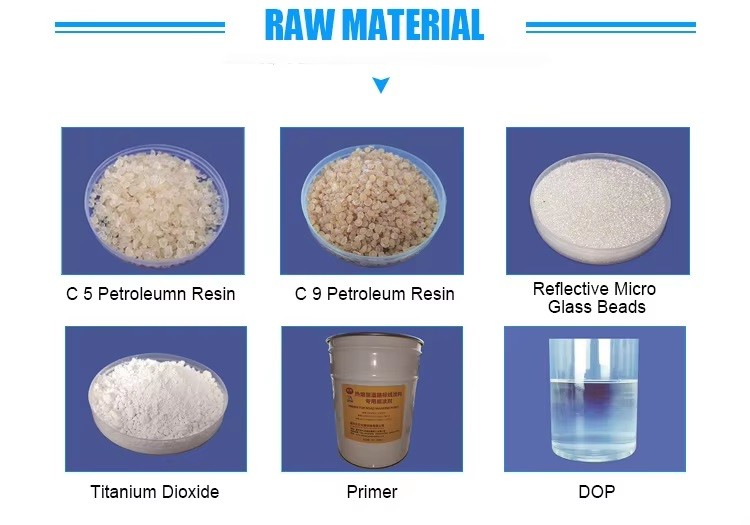
II. Application Process
1. Surface Preparation: Before applying the hot melt coating, the
road surface must be thoroughly cleaned. This involves removing
dirt, debris, oil, and any loose materials. Sweeping, pressure
washing, or using specialized cleaning equipment is common. A dry
and clean surface is essential for proper adhesion of the coating.
2. Melting and Application: The hot melt paint material is heated
in a specialized melting kettle to a specific temperature range,
usually between 180 - 220 degrees Celsius. Once melted, it can be
applied using various methods. One common approach is through a
thermoplastic sprayer or a squeegee. For example, in the case of
spraying, the molten coating is evenly sprayed onto the road
surface in the desired pattern. When using a squeegee, the melted
coating is poured onto the road and then spread evenly to the
required thickness, usually around 1.5 - 3 millimeters for standard
road markings.
3. Drying and Curing: After application, the hot - melt coating
cools and solidifies rapidly. This quick - drying property
minimizes the disruption to traffic flow during the marking
process. Once solidified, the coating forms a durable and hard
layer that can withstand the heavy loads and friction from vehicle
tires.

III. Advantages
Hot melt marking paint have several advantages:
1. Quick - drying
- Hot melt marking paint solidify rapidly once they cool down after
being applied in a molten state. This allows for a shorter waiting
time between application and further processing or use of the
coated surface, increasing work efficiency. For example, in road -
marking applications, traffic can be allowed back on the marked
area much sooner compared to some other types of paint.
2. Strong adhesion
- They can adhere well to a variety of substrates such as asphalt,
concrete, and metal. The molten nature of the coating enables it to
penetrate into the pores and irregularities of the surface during
application, creating a strong mechanical bond when it solidifies.
This ensures that the coating stays in place and provides long -
term protection or marking.
3. Durability
- Hot melt marking paints are generally quite durable. They can
withstand harsh environmental conditions including exposure to
sunlight, rain, and temperature variations. They are resistant to
abrasion, which makes them suitable for high - traffic areas such
as roads and industrial floors. The hard and tough nature of the
solidified coating helps it maintain its integrity over an extended
period.
4. Good flexibility
- Many hot melt marking paints have a certain degree of
flexibility. This property allows the coating to expand and
contract along with the substrate without cracking or peeling. For
example, on surfaces that experience thermal expansion and
contraction, like outdoor pavements, the flexibility of the hot -
melt coating helps it to adapt to these changes and stay intact.
5. Chemical resistance
- They offer resistance to a range of chemicals. This is beneficial
in industrial settings where the coated surfaces may come into
contact with oils, solvents, and other chemicals. The chemical -
resistant property helps to prevent the coating from being damaged
or degraded by such substances, thus maintaining its protective
function.
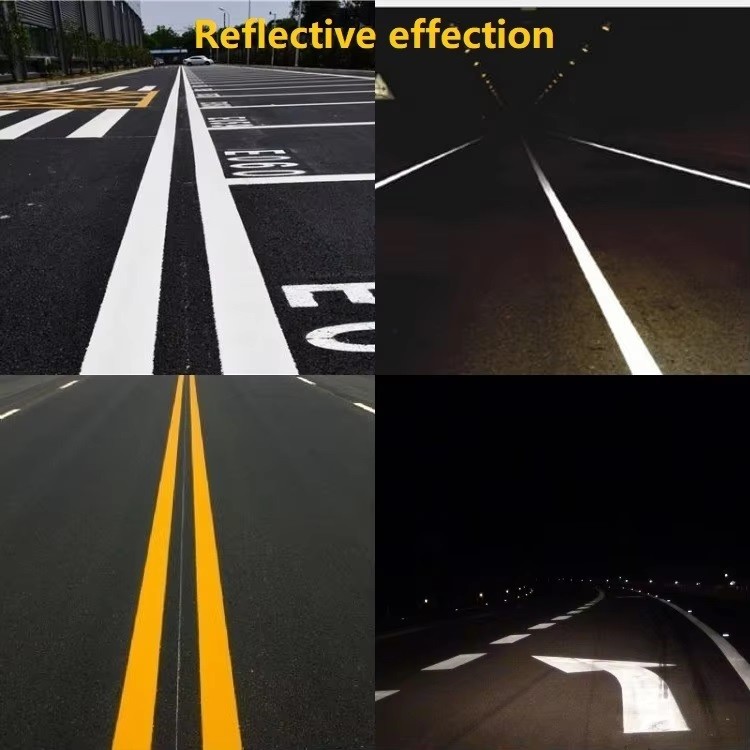
IV. Specification
| Density (g/cm3) | 1.8-2.3 |
| Softening point(℃) | 90-125 |
| Compressive strength(MPa) | ≥12 |
| Glass bead content(%) | 0-30%(Customized) |
| Liquidity | 35±10 |
| Packing | 25kg/bag±0.2 |
| Color | White/Yellow/Blue/Green/Customized |
| Executive standard | JT/T280-2004/AASHTO/BS3262/Customized |
| Appearance | Powder |
| Construction temperature | 180℃-220℃ |
| Whiteness | 70-85(Customized) |
| Inverse coefficient | 50-550 |
| Warranty | 365days |
| Storage Method | Avoid light and moisture |
| Packing size | 45×70×5cm |
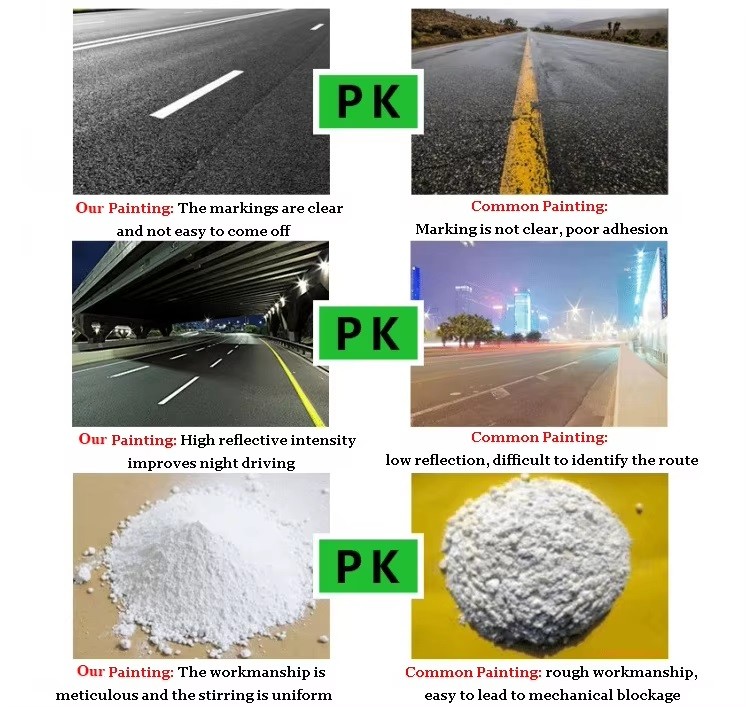
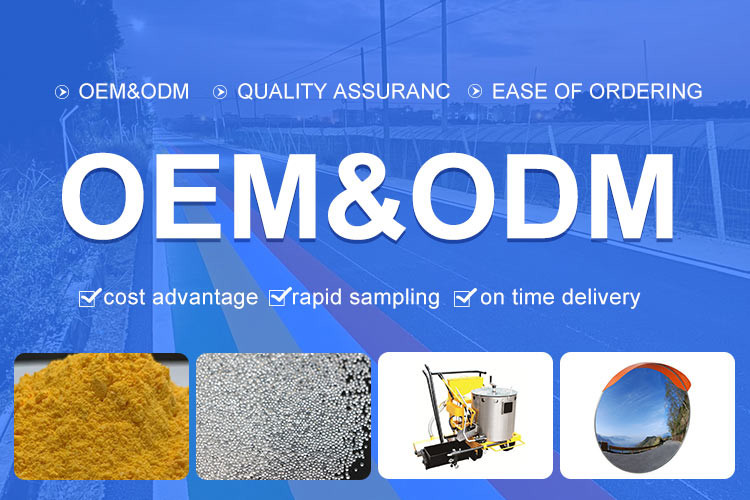
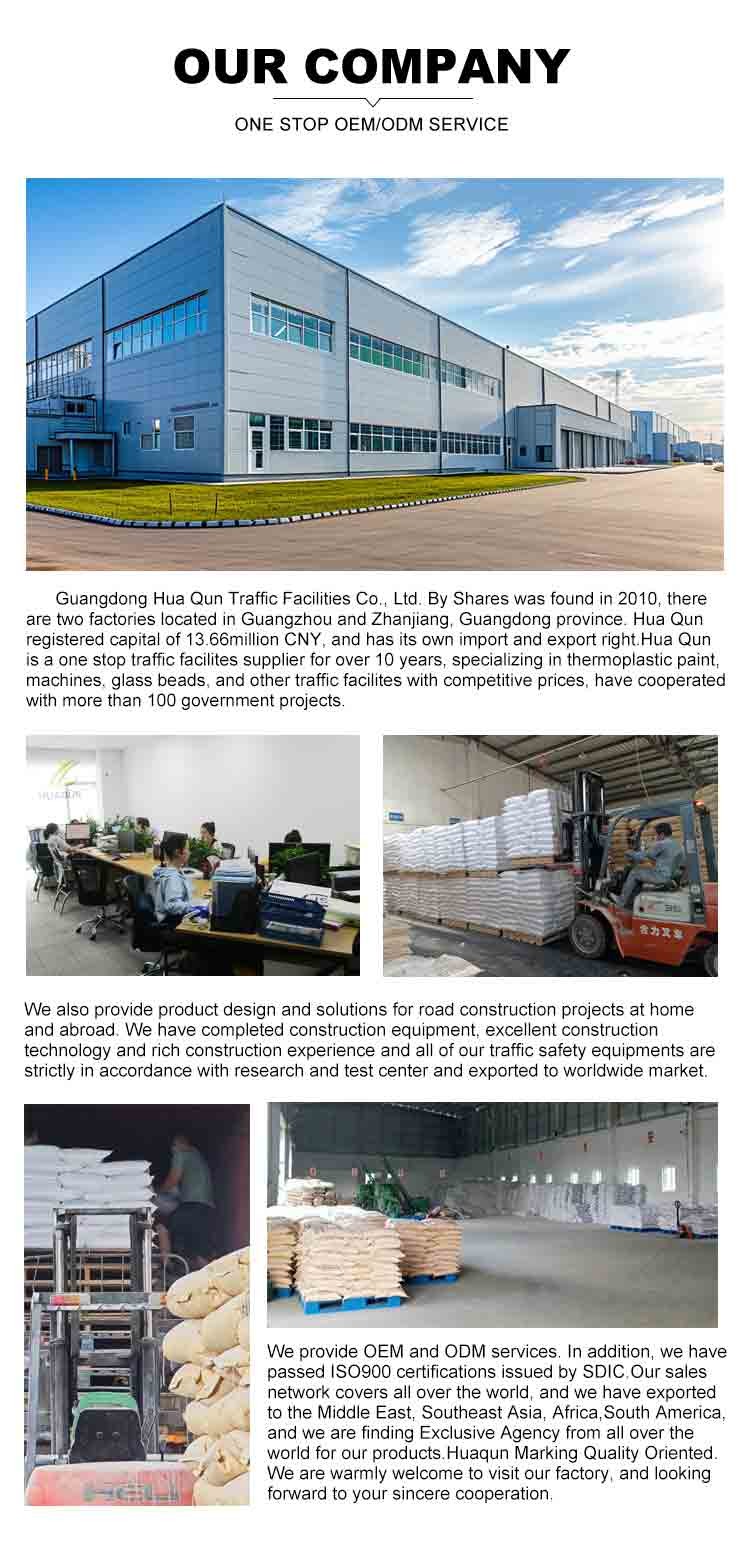
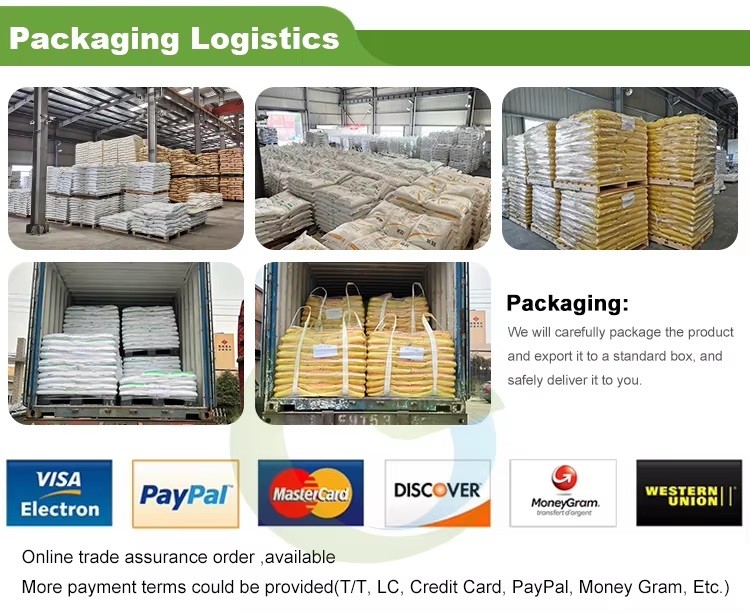
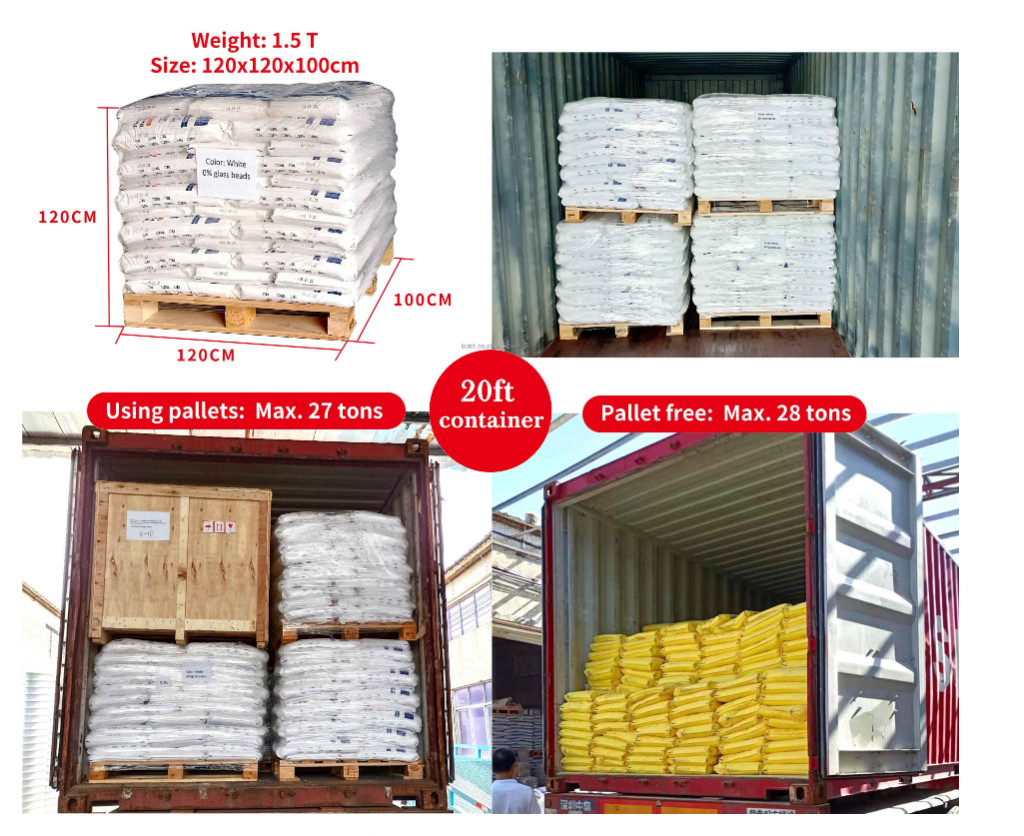
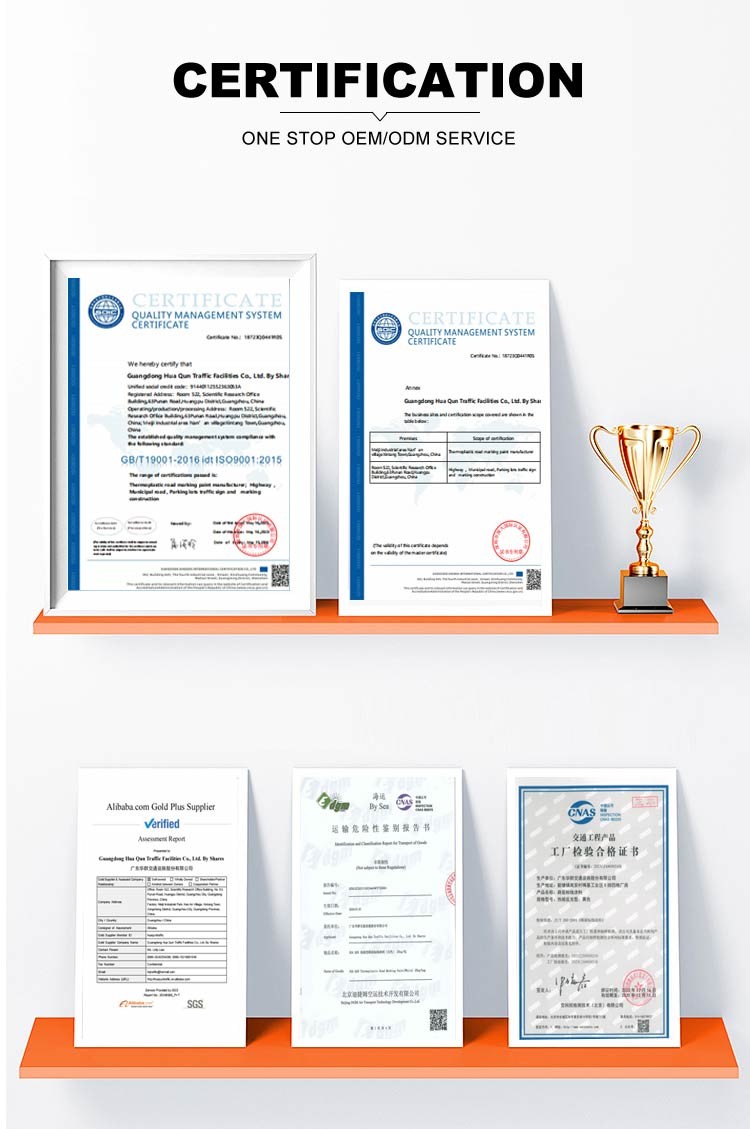

|